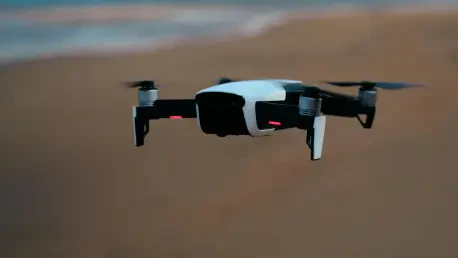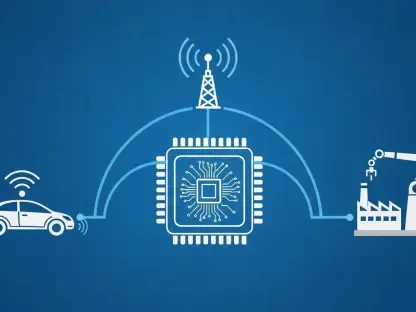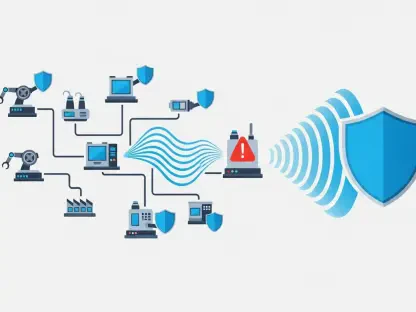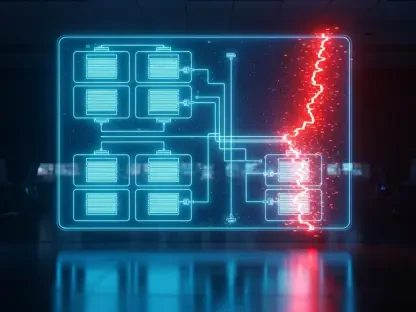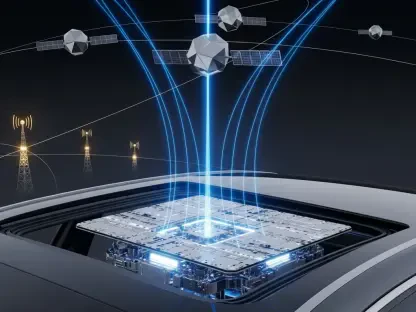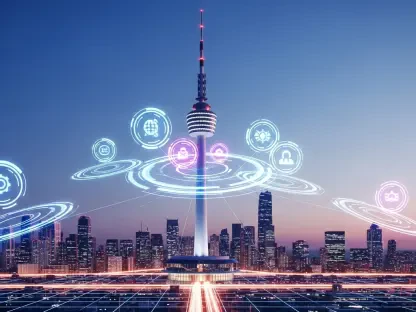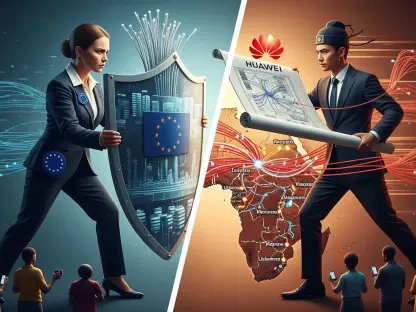Imagine a skyline buzzing with drones delivering packages, monitoring infrastructure, and aiding in emergencies, all while navigating complex urban environments with pinpoint accuracy. This vision of the future hinges on cutting-edge wireless technology, specifically 6G, which promises to revolutionize connectivity and safety for autonomous systems. At the heart of this transformation lies drone geofencing—a digital barrier designed to prevent collisions and ensure compliance with airspace rules. This roundup gathers diverse perspectives from industry leaders, analysts, and technology pioneers to explore how 6G sensing could shape drone operations, highlighting both the excitement and the challenges surrounding this emerging innovation.
Exploring the Horizon: Why 6G and Drone Geofencing Matter
The advent of 6G technology stands poised to redefine how autonomous devices interact with their surroundings, offering unprecedented capabilities in sensing and connectivity. Industry voices are increasingly spotlighting drone geofencing as a critical application, where virtual boundaries created through advanced signals can safeguard against accidents in crowded or restricted areas. This roundup aims to dissect the potential of this technology, drawing from a spectrum of opinions to understand its role in the broader 6G landscape.
Conversations with technology frontrunners reveal a shared optimism about 6G’s ability to enhance safety for drones, particularly in urban settings where obstacles abound. The concept of using bounced signals to detect positions and barriers in real-time is seen as a game-changer for ensuring that drones avoid no-fly zones or unexpected hazards. However, beneath this enthusiasm lies a layer of uncertainty about the practical rollout and whether this application will truly lead the charge in next-generation wireless advancements.
This compilation of insights also seeks to address the timeline and feasibility of integrating such sophisticated sensing into everyday drone use. With the anticipated emergence of 6G standards around 2030, stakeholders are already debating the technical foundations and strategic priorities needed to make geofencing a reality. The following sections delve into these discussions, comparing varied viewpoints on the path forward.
Diverse Perspectives on 6G Sensing for Drones
Technical Foundations: Building a Digital Safety Net
A key theme emerging from industry discussions is the use of 6G signals to create a virtual shield for drones, often described as a “Do Not Enter” sign in the digital realm. Experts from leading tech firms emphasize that this geofencing capability relies on sensing technologies that can map environments and prevent collisions by detecting obstacles instantly. Such a system is deemed essential for scaling drone operations in densely populated areas.
Insights from hardware and network specialists point to specific frequency bands, particularly millimeter wave (mmWave), as a cornerstone for early implementations of this technology. While mmWave shows promise in open environments due to its high precision, past experiences with 5G deployments highlight limitations like short range and vulnerability to interference. These challenges raise questions about its suitability for comprehensive drone coverage across varied terrains.
A contrasting opinion from some network planners suggests that over-reliance on a single frequency band could hinder progress. They advocate for a more flexible approach, exploring a mix of gigahertz bands to ensure robust performance under diverse conditions. This diversity in technical strategies underscores the complexity of translating 6G sensing into a reliable safety mechanism for autonomous flight.
Industry Enthusiasm: Transformative Potential of Sensing
Across the sector, there’s a palpable excitement about how 6G sensing could extend beyond drones to enable broader environmental awareness for all connected devices. Representatives from major telecom companies argue that this technology could redefine autonomy, allowing systems to interact with their surroundings in ways previously unimaginable. Drone geofencing, in this context, is often cited as a pioneering use case with immediate relevance.
However, not all industry players agree on the primacy of geofencing as the flagship application. Some innovators in the autonomous vehicle space propose that other sensing applications, such as real-time traffic monitoring or industrial automation, might take precedence depending on regional needs and market demands. This divergence in focus highlights the fluid nature of 6G’s development trajectory over the next few years leading to 2030.
A recurring concern among industry watchers is the standardization process, which remains in its early stages. Many stress the importance of global collaboration to ensure interoperability and safety protocols for drone operations. These discussions reflect a broader anticipation of how 6G could reshape multiple industries, even as the exact path remains under debate.
Analyst Viewpoints: Weighing Hype Against Reality
Analysts provide a balanced lens on the prospects of drone geofencing within the 6G framework, with some praising its potential to add significant value to connectivity. Those optimistic about the technology highlight its capacity to enhance safety and efficiency, not just for drones but for a range of autonomous systems. They see sensing as a critical step toward smarter, more responsive networks.
On the flip side, a segment of industry observers cautions against overhyping geofencing as the defining feature of 6G. They argue that while the concept is viable, other unforeseen innovations or persistent technical hurdles could shift priorities by the time full deployment nears. This skepticism prompts a deeper examination of whether current enthusiasm aligns with long-term practical outcomes.
A third perspective from market researchers emphasizes the competitive dynamics among vendors as a driving force. They suggest that rivalries in developing sensing technologies might accelerate advancements but could also fragment efforts if not guided by unified standards. This blend of optimism and caution paints a nuanced picture of geofencing’s place in the evolving wireless ecosystem.
Key Takeaways from the 6G Geofencing Dialogue
Reflecting on the myriad opinions shared, it becomes clear that 6G drone geofencing sparks both inspiration and critical analysis among industry stakeholders. The promise of creating safer skies through advanced sensing captivates many, yet the technical challenges of frequency selection and environmental adaptability temper expectations. Analysts and tech leaders alike underscore the importance of collaborative research to address these hurdles.
Looking back, the discussions also reveal a consensus on the need for robust safety standards as drone usage expands in commercial and urban contexts. The varied predictions about geofencing’s role—whether as a leading application or a complementary feature—highlight the unpredictable nature of technological evolution. These debates serve as a reminder of the long road ahead before 6G fully materializes.
Moving forward, stakeholders are encouraged to invest in testing diverse frequency bands and fostering partnerships to refine sensing capabilities. Prioritizing pilot programs for drone safety in real-world settings could yield valuable data to inform future standards. Additionally, keeping an eye on parallel innovations in autonomy and connectivity will ensure that geofencing develops as part of a holistic vision for smarter, safer systems.
